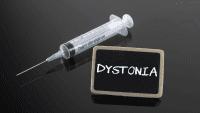Donald Brooks, age 57, comes to the emergency department after fracturing his right hip in a skiing accident. He is admitted to the orthopedic progressive care unit for planned open reduction and internal fixation (ORIF) surgery the next day.
During his admission, Luke, a registered nurse, reviews Mr. Brooks’ past medical history, which reveals hypertension, diabetes mellitus type 2, and a kidney transplant 3 years ago. While reviewing the patient’s medication list, he notes several medications he’s not familiar with. He makes a note to get the answers to several key questions: How do these drugs work? Which information is crucial to know about them? All oral intake needs to be withheld prior to surgery, but can all of his drugs safely be withheld?
Transplant facts and figures
As of March 2015, approximately 123, 272 Americans needed an organ transplant. Between January and November 2014, 27,037 transplants were performed in the United States, with 13,125 people donating organs. Every 10 minutes, someone is added to the national transplant waiting list.
How can relatively few donors provide life to so many people? Just one organ donor can save eight lives.
- Transplantable organs include the heart, lungs, intestines, liver, pancreas, and kidneys.
- Transplantable tissues include the blood vessels, bone, connective tissue, cartilage, heart valves, eyes, and skin.
- Cells that can be transplanted are stem cells, such as bone marrow, peripheral blood, and cord blood.
- Other important transplants in the general patient population are blood and platelet transplants.
Researchers continue to discover more ways in which transplantations can be used to transform lives. This article focuses on solid-organ transplants.
What you need to know about immunosuppressant drugs
When something that’s “non-self,” such as a virus, bacterium, or a transplanted organ, is introduced into the body, the body’s normal response is to defend itself. This defense mechanism sets off the immune response—a cascade of events that causes the body to fight off the intruder by killing and getting rid of it.
Immunosuppressant drugs work by suppressing the body’s natural defenses and preventing it from attacking the non-self—in this case, the transplanted organ. Usually, organ recipients must take these drugs lifelong to decrease the risk that the immune system will attack the transplanted organ.
Patients must take the right immunosuppressant dose; an insufficient dose can lead to rejection of the transplanted organ, while an excessive dose can cause organ failure from immunologic compromise. Excessive doses may allow opportunistic infections, such as cytomegalovirus, varicella-zoster, and many others, to invade the body and impede organ function.
Immunosuppressants are given:
- during the induction period—from the time the organ is transplanted into the recipient to about the second week after transplantation
- as a maintenance regimen, starting about 3 months after transplantation through the life of the transplanted organ
- to treat organ rejection.
The maintenance period is a crucial time during which immunosuppressants are given at their lowest effective dosage.
Triple therapy
The most effective immunosuppressant regimen is called triple therapy, in which three immunosuppressants from different classes are given to promote optimal function and to protect the transplanted organ. Patients take a corticosteroid, an antimetabolite, and either a calcineurin inhibitor (CNI) or a mammalian target of rapamycin (mTOR) inhibitors.
The specific medication and dose depend on how long the patient has had the transplanted organ, whether organ rejection has occurred, trough blood drug levels, and other factors.
Corticosteroids
Corticosteroids have been used for maintenance therapy as a standard of care since the 1960s. Their immunosuppressant and anti-inflammatory properties stem from their ability to affect the immune response during many different phases. However, these drugs can cause numerous side effects, including cataracts, diabetes mellitus, impaired wound healing, osteoporosis, hypertension, hyperlipidemia, cardiovascular disease, and weight gain. Some corticosteroids can be given I.V. (such as methylprednisolone); others by the oral route (such as prednisone).
Antimetabolites
Antimetabolites (also called antiproliferative drugs) are used as maintenance immunosuppressants because they inhibit proliferation of B and T lymphocytes. Drugs in this class include azathioprine (Imuran®) and mycophenolic acids, including mycophenolate mofetil (MMF; CellCept®), mycophenolate sodium (Myfortic®), and cyclophosphamide (Cytoxan®).
Azathioprine was the first antimetabolite used for immunosuppression, but mycophenolate mofetil has quickly surpassed it to become the primary agent in this category. Bone marrow suppression is a significant side effect. The patient’s complete blood counts and platelet counts should be monitored frequently during the first few months, and at least every 3 months thereafter. Other side effects include alopecia and pancreatitis.
Mycophenolic acids can cause GI problems, such as nausea, vomiting, and diarrhea. If these occur, the dosage may need to be decreased or food intake adjusted. To ensure compliance, the drug may be replaced with an alternative in the same class.
CNIs
The two most common CNIs are cyclosporine (Sandimmune®, Neoral®, Gengraf®) and tacrolimus (Prograf®). These drugs ultimately stop T-cell activation and proliferation or reproduction. (T cells are major contributors to immune response activation.) Cyclosporine can be given in several formulations, depending on patient-specific dosing requirements. Tacrolimus is more potent than cyclosporine in promoting transplant-organ survival and patient survivability as well as in preventing transplant rejection.
CNI effectiveness depends largely on maintaining a therapeutic drug level. Patients taking CNIs must have a trough blood level drawn 12 hours after the last dose. An accurate trough level is important because it determines subsequent dosages, which must be within the safest therapeutic range for that particular patient. Therapeutic concentration ranges from 100 to 400 ng/mL for cyclosporine and 5 to 20 ng/mL for tacrolimus. (See the box below.)
Therapeutic drug monitoringThe table below suggests the frequency of blood tests for organ-transplant patients taking certain immunosuppressants. However, be sure to follow your hospital’s specific policies and procedures.
|
CNI dosages depend on such factors as time since transplantation, patient’s transplant rejection history, and presence of infection.
The most common side effects of CNIs are nephrotoxicity, hyperkalemia, and hyperlipidemia. Cyclosporine is more likely to cause hypertension, hirsutism, and gum hyperplasia; tacrolimus is more likely to cause hyperglycemia, tremors, and neurotoxicity.
mTOR inhibitors
Sirolimus (also called rapamycin) works by inhibiting T-lymphocyte proliferation and stimulation. The Food and Drug Administration has approved it for preventing kidney transplant rejection. Sirolimus (Rapamune®) has a black-box warning for use in liver transplant patients; evidence shows that when used in combination with cyclosporine or tacrolimus, the drug is associated with an increased risk of hepatic artery thrombosis.
Trough sirolimus levels must be drawn 22 to 24 hours after the last dose. Adverse effects include GI upset, dyslipidemia, impaired wound healing, and delayed transplant-organ recovery.
Identifying transplant patients on admission
Caring for a solid-organ transplant patient in a non-transplant care area may cause anxiety for some nurses. Transplant patients can be identified on admission when obtaining their health history. Once you’ve identified such a patient, elicit and document the following:
- type of solid organ transplant (such as kidney, kidney/pancreas, liver, heart, lung, or intestine)
- year of transplantation
- rejection episodes (if any), to help determine the most appropriate immunosuppressant.
Ask the patient about current medications, including names, dosages, last dose taken, and side effects. Then make interdisciplinary team members aware of the patient’s transplant history. Also, the patient, a family member, or a healthcare team member (with the patient’s permission) should notify the transplant center where the transplantation surgery was done that the patient has been hospitalized. Transplant center staff can consult with the inpatient healthcare team to ensure the patient receives appropriate care.
Managing transplant medications
Patients with organ transplants may take 10 to 15 medications daily. During admission and medication reconciliation, the healthcare team must be sure to administer the appropriate medications on time, taking into consideration when the patient took the last dose. As discussed earlier, with many immunosuppressants, trough levels must be drawn to protect the organ and help it maintain optimal function. Adhere to your facility’s policy and procedures, because drug monitoring and blood-drug ranges change frequently and are patient specific. Obtain timely trough levels so results are available for appropriate medication dosing. If the patient is on NPO status for a procedure, obtain orders as to which medications to administer with sips of water.
Key points to remember
Keep in mind that some of the medications discussed in this article have indications besides solid-organ transplant immunosuppression. So don’t assume a patient has had a transplant because he or she is taking (for instance) azathioprine; this drug also is used manage rheumatoid arthritis.
By obtaining a thorough patient history, you can identify this unique population of patients. Also, keep communication open with other interdisciplinary team members, the patient, and family members so everyone knows the plan of care.
With a better understanding of immunosuppressant medications, you can provide safe, basic, and appropriate care for patients with solid organ transplants.
Selected references
Cupples SA, Ohler L. Transplantation Nursing Secrets. Philadelphia: Hanley & Belfus; 2002.
Gabardi S, Martin ST, Roberts KL, Grafals M. Induction immunosuppressive therapies in renal transplantation. Am J Health Syst Pharm. 2011;68(3):211-8.
Massoud O, Wiesner RH. The use of sirolimus should be restricted in liver transplantation. J Hepatol. 2012;56(1):288-90.
Naesens M, Kuypers DR, Sarwal M. Calcineurin inhibitor nephrotoxicity. Clin J Am Soc Nephrol. 2009 Feb;4(2):481-508. doi: 10.2215/CJN.04800908
Ohler L, Cupples SA, eds. Core Curriculum for Transplant Nurses. St. Louis: Mosby; 2008.
U.S. Department of Health & Human Services. Organ Procurement and Transplantation Network. optn.transplant.hrsa.gov/
U.S. Department of Health & Human Services. What Can Be Donated. organdonor.gov/about/donated.html
Clarissa Welbaum is a certified clinical nurse specialist in the multisystem intensive care, transplant progressive care unit, (PCU) surgical PCU, orthopedic PCU, and dialysis unit at Florida Hospital in Orlando.


















